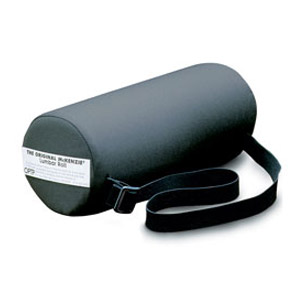1. Awareness: Of course, this is by far the best solution.
2. For the low back: McKenzie rolls. It’s a cylindrical pillow with an elastic strap to hold it in place. The McKenzie roll is placed right above your waistline to help maintain your natural lumbar curve. It works great in the car, which never seem to have lumbar supports that are big enough. There are also inflatable lumbar supports for travel, too.
4. Posture brace: This gizmo slips around your shoulders and criss-crosses in the back to get you into the habit of pulling your shoulders back.
5. Taping (shoulder and low by physical therapist to keep your back straight and pull your shoulders back. This is a short-term solution to bad posture. The tape acts as aid to remind your muscles to keep you upright.
6. Soft tissue and joint mobilization by physical therapist, addressing the important areas: Thoracic spine, pecs, paraspinals, hip flexors, psoas and hamstring muscles.
7. Foam rolling exercises: Bar none if you don’t have access to a massage therapist! This little piece of 3 foot foam/6-inch diameter will be the best $30 investment you could ever make for yourself. One of my clients says that she doens’t understand why everyone doesn’t have one because the exercises are so easy and they’ve helped eliminate her neck and shoulder pain.
8. Yoga and Pilates: Gets your core strong and tight areas flexible. Undoes the damage caused by prolonged sitting.
I’d love to hear what your favorite posture correctors are!
